The modern automotive landscape is increasingly dominated by electric vehicles, and two prominent contenders in the compact SUV category are the Tesla Model Y and the Porsche Macan. Both vehicles offer a blend of performance, luxury, and innovative technology, but they appeal to different segments of the market. This article will delve into the technical aspects of both vehicles and highlight their innovations.
Tesla Model Y vs Porsche Macan – Performance, range & efficiency compared
Both models have their strengths – but which one suits you more?
Compare performance, efficiency, price and space directly: Tesla Model Y or Porsche Macan?
Power and Performance
The Tesla Model Y is available in multiple configurations, providing robust power options ranging from 299 HP to 534 HP. In terms of torque, it can achieve up to 660 Nm, ensuring potent acceleration and driving dynamics. The model offers impressive efficiency, with a consumption rate as low as 14.9 kWh/100km and an electric range up to 600 km, depending on the configuration.
On the other hand, the Porsche Macan presents itself as a powerhouse with power outputs of 360 HP to 639 HP. The higher-end variants reach an astounding torque of 1130 Nm, emphasizing the Macan's performance pedigree. Although slightly less efficient with a consumption rate peaking at 18.8 kWh/100km, the Macan compensates with an impressive electric range that can extend to 644 km.
Acceleration and Speed
When it comes to acceleration, the Tesla Model Y offers sub-6 second sprint times with the Performance variant reaching 0-100 km/h in just 3.7 seconds. This provides drivers with a thrilling and responsive experience, making it suitable for both urban environments and open highways.
The Macan, known for its sporty characteristics, excels in acceleration as well, especially in its high-performance variants. The top Macan model accelerates from 0-100 km/h in just 3.3 seconds, showcasing its capabilities as a luxury performance SUV.
Range and Efficiency
One of the standout features of the Tesla Model Y is its remarkable electric range. With its largest battery capacity of 79 kWh, it can travel up to 600 km on a single charge. Additionally, its impressive energy consumption of 14.9 kWh/100km sets it apart as a more economical option for everyday use.
On the contrary, while the Porsche Macan, equipped with a 96 kWh battery, has a range of around 644 km, its efficiency is slightly lower than that of the Model Y. However, for drivers prioritize performance over range, the Macan's capabilities may outweigh this difference.
Design and Interior
In terms of design, both vehicles embody their brand identity well. The Tesla Model Y has a minimalist aesthetic with a spacious interior and a focus on modern tech. Featuring a central touchscreen interface that controls most functions, it offers ample cargo space with a trunk capacity reaching 854 liters.
The Macan, in contrast, embodies luxury with its high-quality materials and driver-centric cockpit. The interior is semi-customizable and features multiple screens to enhance the driving experience. Despite its slightly smaller trunk capacity at 540 liters, the Macan provides a luxurious space that feels refined and sporty.
Conclusion: Which SUV Reigns Supreme?
Choosing between the Tesla Model Y and the Porsche Macan comes down to personal preferences. If you’re looking for cutting-edge technology, superior efficiency, and an extended electric range, the Model Y is your best bet. However, for those who prioritize performance, luxury, and driving dynamics, the Porsche Macan is hard to beat.
Both vehicles offer unique strengths and innovations, making them two of the most interesting options in the electric SUV market today. Whether you value technology, performance, or a blend of both, you can’t go wrong with either choice.
Here’s where it gets real: The technical differences in detail
Costs and Efficiency:
Looking at overall running costs, both models reveal some interesting differences in everyday economy.
Tesla Model Y has a convincingly advantage in terms of price – it starts at 38600 £, while the Porsche Macan costs 69200 £. That’s a price difference of around 30609 £.
In terms of energy consumption, the advantage goes to the Tesla Model Y: with 13.90 kWh per 100 km, it’s clearly perceptible more efficient than the Porsche Macan with 17 kWh. That’s a difference of about 3.10 kWh.
As for range, the Porsche Macan performs slight better – achieving up to 644 km, about 22 km more than the Tesla Model Y.
Engine and Performance:
Under the bonnet, it becomes clear which model is tuned for sportiness and which one takes the lead when you hit the accelerator.
When it comes to engine power, the Porsche Macan has a slight edge – offering 639 HP compared to 627 HP. That’s roughly 12 HP more horsepower.
In acceleration from 0 to 100 km/h, the Porsche Macan is minimal quicker – completing the sprint in 3.30 s, while the Tesla Model Y takes 3.50 s. That’s about 0.20 s faster.
In terms of top speed, the Porsche Macan performs barely noticeable better – reaching 260 km/h, while the Tesla Model Y tops out at 250 km/h. The difference is around 10 km/h.
There’s also a difference in torque: Porsche Macan pulls convincingly stronger with 1130 Nm compared to 493 Nm. That’s about 637 Nm difference.
Space and Everyday Use:
Cabin size, boot volume and payload all play a role in everyday practicality. Here, comfort and flexibility make the difference.
Both vehicles offer seating for 5 people.
In curb weight, Tesla Model Y is slightly lighter – 1976 kg compared to 2295 kg. The difference is around 319 kg.
In terms of boot space, the Tesla Model Y offers evident more room – 822 L compared to 540 L. That’s a difference of about 282 L.
In maximum load capacity, the Tesla Model Y performs evident better – up to 2022 L, which is about 674 L more than the Porsche Macan.
When it comes to payload, Porsche Macan a bit takes the win – 545 kg compared to 472 kg. That’s a difference of about 73 kg.
Who comes out on top?
Overall, the Tesla Model Y shows itself to be leaves the rival little chance and secures the title of DriveDuel Champion.
It convinces with the more balanced overall package and proves to be the more versatile choice for everyday use.
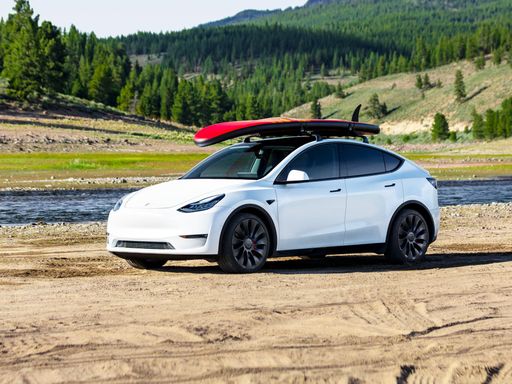 @ Tesla, Inc.
@ Tesla, Inc.
Tesla Model Y
Tesla Model Y
The Tesla Model Y blends SUV practicality with sports-car poke, wrapping a roomy, minimalist cabin and handy hatch into a slick, aerodynamic package that feels more Silicon Valley gadget than garage ornament. It’s an ideal pick for buyers who want effortless electric driving, regular software improvements and access to Tesla’s convenient charging network, though style-conscious shoppers should know it’s more about tech and efficiency than classic luxury.
details @ Tesla, Inc.
@ Tesla, Inc.
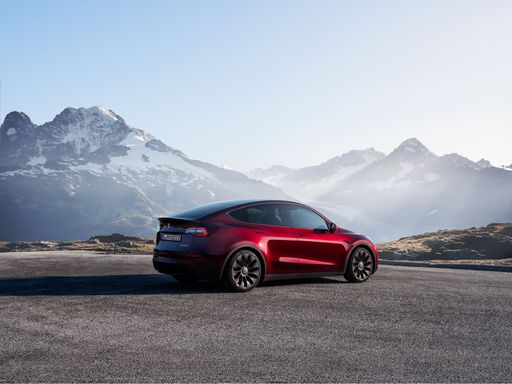 @ Tesla, Inc.
@ Tesla, Inc.
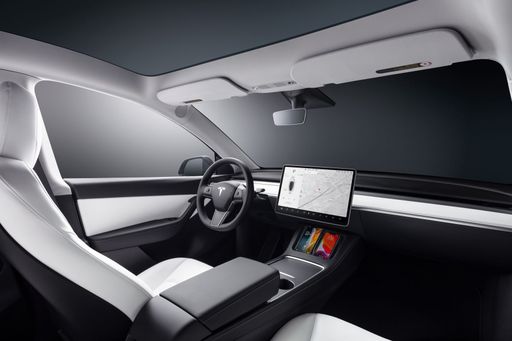 @ Tesla, Inc.
@ Tesla, Inc.
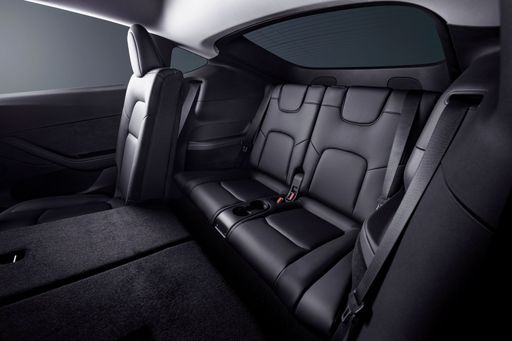 @ Tesla, Inc.
@ Tesla, Inc.
Porsche Macan
Der Porsche Macan verkörpert die ideale Fusion aus Sportlichkeit und Alltagstauglichkeit und beeindruckt mit seiner dynamischen Linienführung. Innen erwartet den Fahrer ein luxuriös ausgestatteter Raum, der höchste Qualität mit modernster Technologie verbindet. Fahreigenschaften und Handling sind auf typisch Porsche-Niveau und bieten ein unvergleichliches Fahrerlebnis, das jeden Ausflug zum Vergnügen macht.
details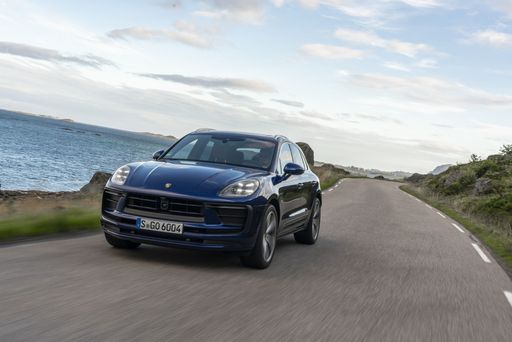 @ Dr. Ing. h.c. F. Porsche AG
@ Dr. Ing. h.c. F. Porsche AG
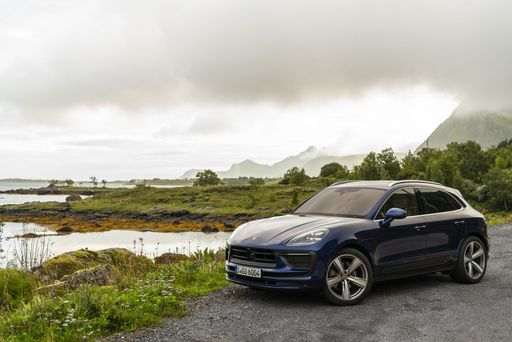 @ Dr. Ing. h.c. F. Porsche AG
@ Dr. Ing. h.c. F. Porsche AG
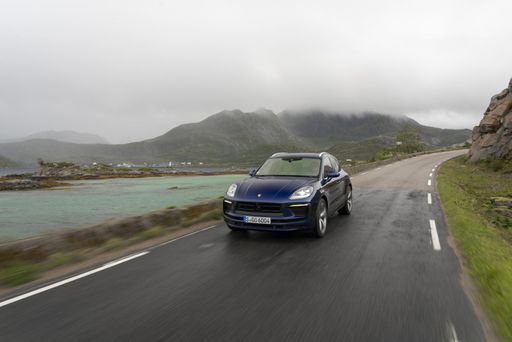 @ Dr. Ing. h.c. F. Porsche AG
@ Dr. Ing. h.c. F. Porsche AG
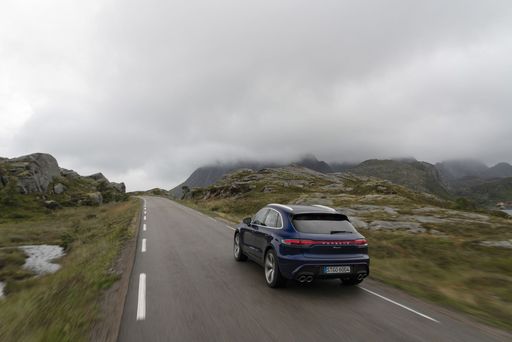 @ Dr. Ing. h.c. F. Porsche AG
@ Dr. Ing. h.c. F. Porsche AG
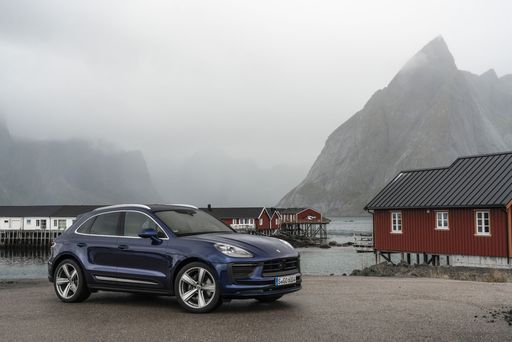 @ Dr. Ing. h.c. F. Porsche AG
@ Dr. Ing. h.c. F. Porsche AG
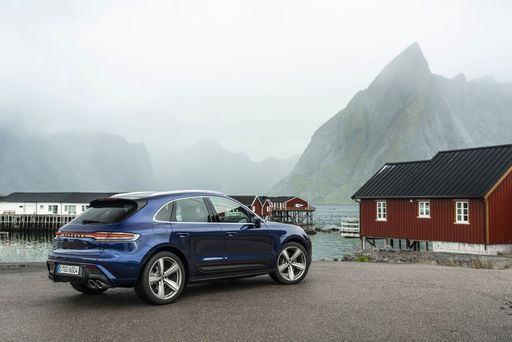 @ Dr. Ing. h.c. F. Porsche AG
@ Dr. Ing. h.c. F. Porsche AG
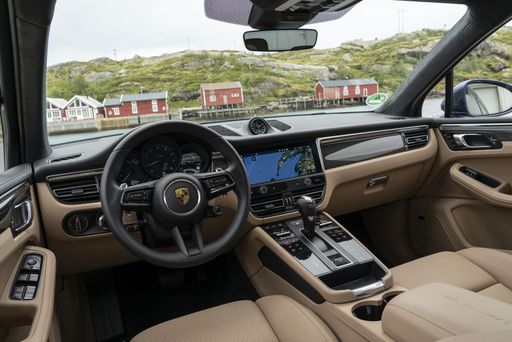 @ Dr. Ing. h.c. F. Porsche AG
@ Dr. Ing. h.c. F. Porsche AG
 @ Tesla, Inc.
@ Tesla, Inc.
|
 @ Dr. Ing. h.c. F. Porsche AG
@ Dr. Ing. h.c. F. Porsche AG
|
|
|
|
Costs and Consumption |
|
|---|---|
|
Price
38600 - 53100 £
|
Price
69200 - 99000 £
|
|
Consumption L/100km
-
|
Consumption L/100km
-
|
|
Consumption kWh/100km
13.9 - 16.2 kWh
|
Consumption kWh/100km
17 - 18.3 kWh
|
|
Electric Range
500 - 622 km
|
Electric Range
590 - 644 km
|
|
Battery Capacity
64.5 - 85 kWh
|
Battery Capacity
95 kWh
|
|
co2
0 g/km
|
co2
0 g/km
|
|
Fuel tank capacity
-
|
Fuel tank capacity
-
|
Dimensions and Body |
|
|---|---|
|
Body Type
SUV
|
Body Type
SUV
|
|
Seats
5
|
Seats
5
|
|
Doors
5
|
Doors
5
|
|
Curb weight
1976 - 2108 kg
|
Curb weight
2295 - 2420 kg
|
|
Trunk capacity
822 L
|
Trunk capacity
480 - 540 L
|
|
Length
4790 - 4796 mm
|
Length
4784 mm
|
|
Width
1921 mm
|
Width
1938 mm
|
|
Height
1611 - 1624 mm
|
Height
1621 - 1623 mm
|
|
Max trunk capacity
2022 L
|
Max trunk capacity
1288 - 1348 L
|
|
Payload
418 - 472 kg
|
Payload
510 - 545 kg
|
Engine and Performance |
|
|---|---|
|
Engine Type
Electric
|
Engine Type
Electric
|
|
Transmission
Automatic
|
Transmission
Automatic
|
|
Transmission Detail
Reduction Gearbox
|
Transmission Detail
Reduction Gearbox
|
|
Drive Type
Rear-Wheel Drive, All-Wheel Drive
|
Drive Type
Rear-Wheel Drive, All-Wheel Drive
|
|
Power HP
299 - 627 HP
|
Power HP
360 - 639 HP
|
|
Acceleration 0-100km/h
3.5 - 5.9 s
|
Acceleration 0-100km/h
3.3 - 5.7 s
|
|
Max Speed
201 - 250 km/h
|
Max Speed
220 - 260 km/h
|
|
Torque
420 - 493 Nm
|
Torque
563 - 1130 Nm
|
|
Number of Cylinders
-
|
Number of Cylinders
-
|
|
Power kW
220 - 461 kW
|
Power kW
265 - 470 kW
|
|
Engine capacity
-
|
Engine capacity
-
|
General |
|
|---|---|
|
Model Year
2025
|
Model Year
2024
|
|
CO2 Efficiency Class
A
|
CO2 Efficiency Class
A
|
|
Brand
Tesla
|
Brand
Porsche
|
Is the Tesla Model Y offered with different drivetrains?
The Tesla Model Y is offered with Rear-Wheel Drive or All-Wheel Drive.
The prices and data displayed are estimates based on German list prices and may vary by country. This information is not legally binding.
